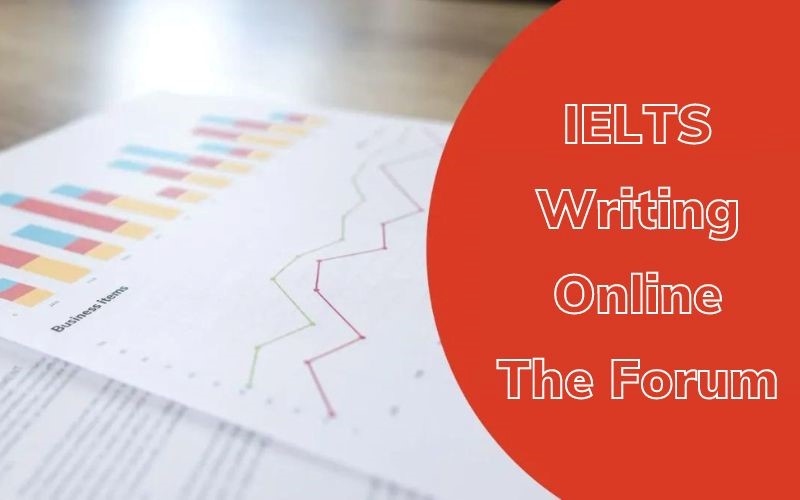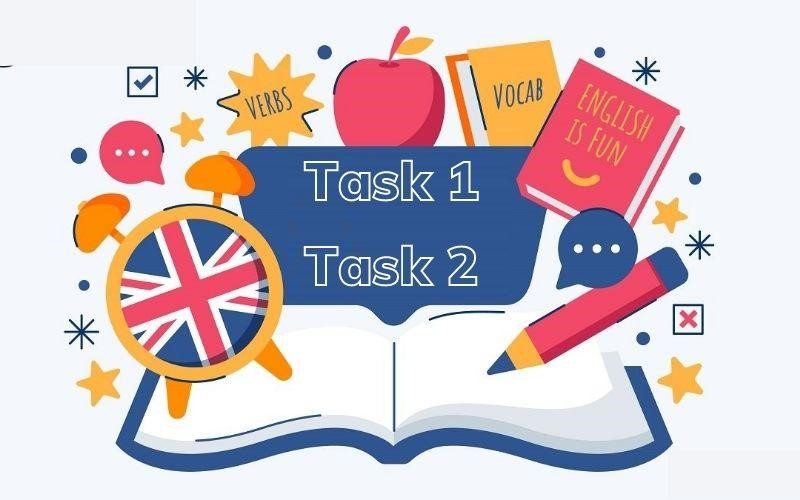








| Practice modules | Listening | Reading | Writing | Speaking |
|---|---|---|---|---|
| Đề Writing Practice Test 01 |
 0%
0%  Take test
Take test
|
|||
| Đề Writing Practice Test 02 |
 0%
0%  Take test
Take test
|
|||
| Đề Writing Practice Test 03 |
 0%
0%  Take test
Take test
|
|||
| Đề Writing Practice Test 04 |
 0%
0%  Take test
Take test
|
|||
| Đề Writing Practice Test 05 |
 0%
0%  Take test
Take test
|
|||
| Đề Writing Practice Test 06 |
 0%
0%  Take test
Take test
|
|||
| Đề Writing Practice Test 07 |
 0%
0%  Take test
Take test
|
|||
| Đề Writing Practice Test 08 |
 0%
0%  Take test
Take test
|
|||
| Đề Writing Practice Test 09 |
 0%
0%  Take test
Take test
|
|||
| Đề Writing Practice Test 10 |
 0%
0%  Take test
Take test
|
Thi thử IELTS Writing Online miễn phí tại The Forum
Trải nghiệm thi thử IELTS Writing Online hoàn toàn miễn phí tại The Forum – Nền tảng Test Writing IELTS trực tuyến, giúp thí sinh có thể chủ động 100% trong việc ôn luyện kỹ năng Viết một cách toàn diện, đánh giá chính xác trình độ hiện tại của bản thân trước khi bước vào bài kiểm tra thực tế.
Nền tảng thi thử thiết kế giao diện đẹp mắt, thân thiện với người dùng, giúp bạn có thể dễ dàng tham gia dù ở bất cứ đâu. Thời gian trả kết quả bài thi Writing sẽ trong vòng 1 tuần sau khi bạn hoàn thành bài Test.

Cấu trúc đề IELTS Writing Online Test
Thời gian làm bài quy định cho bài IELTS Writing Online sẽ diễn ra trong vòng 60 phút với hai phần thi là Writing Task 1 và Writing Task 2.
Đối với đề thi IELTS Writing dạng Academic:
- Task 1: Bài thi sẽ yêu cầu thí sinh viết bài mô tả, tóm tắt, giải thích cho đồ thị, bản đồ, sơ đồ hay số liệu trong biểu đồ.
- Task 2: Bài thi yêu cầu thí sinh đưa ra quan điểm cá nhân, tranh luận về một vấn đề xã hội bất kỳ.

Đối với đề thi IELTS Writing dạng General Training:
- Task 1: Bài thi yêu cầu thí sinh viết thư tìm hiểu thông tin hoặc giải thích tình huống thuộc các chủ đề quen thuộc trong đời sống sinh hoạt hàng ngày.
- Task 2: Bài thi yêu cầu thí sinh viết bài tiểu luận trình bày quan điểm của bản thân về một vấn đề, sự việc bất kỳ.
Xem thêm: Cấu trúc đề thi IELTS
Các dạng bài thường gặp trong đề thi IELTS Writing
Bài thi IELTS Writing có thể gây khó khăn cho những người mới học nhưng chỉ cần bạn nắm chắc dạng đề và luyện tập thường xuyên thì chắc chắn sẽ đạt kết quả tốt. Dưới đây là một số dạng bài thường gặp trong đề thi IELTS Writing bạn có thể tham khảo.
Dạng bài thường gặp trong đề thi Writing Task 1
Các dạng bài IELTS Writing Task 1 thường gặp như sau:
- Dạng Line graph (Biểu đồ đường): Đề bài sẽ cho một hoặc nhiều biểu đồ đường và yêu cầu thí sinh mô tả. Đây là dạng bài phổ biến trong đề thi Writing của IELTS, càng nhiều biểu đồ thì mức độ khó càng tăng lên.
- Dạng Bar chart (Biểu đồ cột): Loại biểu đồ này sẽ thể hiện dữ liệu ở dạng cột dọc hoặc ngang, thường dùng với mục đích làm nổi bật sự khác nhau giữa các đối tượng.
- Dạng Pie chart (Biểu đồ hình tròn): Dạng biểu đồ này sẽ cần thí sinh phân tích và so sánh các đối tượng nói chung. Mỗi yếu tố sẽ được hiển thị bằng các màu sắc khác nhau và đơn vị của số liệu là %.
- Dạng Table (Bảng): Dạng đề này thường chứa dữ liệu về một chủ đề và cần thí sinh viết phân tích, so sánh.
- Dạng Process (Quy trình): Đề bài sẽ đưa ra một quy trình tự nhiên hoặc quy trình nhân tạo và thí sinh phải mô tả các bước quy trình diễn ra.
- Dạng tích hợp: Đề bài sẽ đưa ra nhiều hơn một dạng biểu đồ và bạn cần kết hợp dữ liệu của cả hai biểu đồ để thống kê, phân tích.

Dạng bài thường gặp trong đề thi Writing Task 2
- Dạng Argumentative/Opinion/Agree or Disagree Essay: yêu cầu thí sinh đưa ra ý kiến cá nhân về một quan điểm, chủ đề nào đó. Người viết có thể tùy chọn lập trường của mình, có thể “Agree”, “Disagree” hoặc “Partly Agree”.
- Dạng Discussion Essay: Đề thi sẽ đưa ra 2 mặt của 1 vấn đề hoặc 2 quan điểm thuộc 2 vấn đề khác nhau và yêu cầu bạn bàn luận.
- Dạng Advantages and Disadvantages Essay: Câu hỏi của dạng đề này thường là “What are the advantages and disadvantages of …?” hoặc “Do advantages outweigh disadvantages?”. Thí sinh có thể trả lời “Yes” hay “No” tùy vào luận điểm bạn định triển khai trong bài viết.
- Dạng Causes and Effects/Causes and Solutions/Problems and Solutions Essay: Đề bài sẽ đưa ra một hiện tượng và yêu cầu người viết tìm ra nguyên nhân và hướng giải quyết cho vấn đề.
- Dạng Two-Part Question Essay: Đây là khuynh hướng ra đề mới của phần thi IELTS Writing Task 2. Thí sinh cần trả lời lần lượt cho từng câu hỏi mà đề bài đưa ra.

Lợi ích của IELTS Test Writing Online
Thi thử IELTS Writing mang đến nhiều lợi ích cho các thí sinh. Đừng ngần ngại đặt bản thân vào môi trường “thực chiến” như thi thật để trau dồi và cải thiện ngay những khuyết điểm hiện có.
Việc tham gia các kỳ thi thử IELTS sẽ giúp bạn biết được khả năng hiện tại của bản thân và xây dựng được lộ trình luyện thi IELTS phù hợp, biết được điểm yếu của bản thân để kịp thời chỉnh sửa và điều chỉnh ngay lộ trình ôn tập nếu cần.
Ngoài ra, đây còn là cơ hội tốt để giúp bạn làm quen với đề và thời gian làm bài, tránh trường hợp bị “hẫng” khi vào phòng thi thật.
Khi thi IELTS trong thực tế, bạn không chỉ phải thi mỗi kỹ năng Writing mà còn phải làm bài kiểm tra 3 kỹ năng khác là Listening, Reading và Speaking. Áp lực phòng thi có thể khiến bạn không phát huy hết được khả năng của mình. Làm các bài thi thử giúp bạn rèn luyện được “bản lĩnh phòng thi”, tránh để những lo lắng cản trở về mặt tinh thần.

Download đề thi thử IELTS Writing có đáp án
Các bạn có thể tham khảo và tải ngay bộ đề thi thử IELTS Writing 2023 mới nhất do đội ngũ The Forum biên soạn và cập nhập liên tục dưới đây
Luyện đề thi thử Writing là quá trình vô cùng quan trọng, không chỉ giúp bạn trau dồi thêm kiến thức, kỹ năng mà còn gia tăng sự tự tin khi làm bài thi thật. Chúc bạn thành công.
Link download đề thi Writing 2023 (Update liên tục) : TẠI ĐÂY









 Đăng ký
Đăng ký 
The line graph illustrates the percentage of four types of materials—paper and cardboard, glass containers, aluminium cans, and plastics—that were recycled between 1982 and 2010 in a certain country.
Overall, the recycling rates of all materials increased over the period, with paper and cardboard consistently being the most recycled material, while plastics remained the least. Aluminium cans and plastics saw gradual but steady growth in recycling, whereas paper and glass experienced some fluctuations.
Paper and cardboard had the highest recycling rate throughout the period, starting at around 65% in 1982, peaking at 80% in 1994, and then slightly declining to about 70% by 2010. Glass containers started at approximately 50%, dropped to about 40% in 1990, but then rose again to reach about 60% in 2010.
Aluminium cans were not recycled until 1986, after which the recycling rate steadily increased from about 5% to just above 45% by 2010. Similarly, plastics were first recorded in 1990 with a recycling rate of about 3%, gradually increasing to around 8% by the end of the period.
In summary, while all materials showed upward trends in recycling, paper and cardboard remained dominant, and plastics lagged significantly behind.
The given line graph illustrates the proportion of waste collected on 4 different platforms (paper & cardboard, glass container, aluminium cans and plastics) over 8 years from 1982-2012.
Overall, it is readily obvious that the percentage of all repurposed materials demonstrate the upward trends by varying degree. Additionally, while paper % cardboard collected led the chart at the end of the period, recycled plastics account for the smallest data throughout the timeline.
Turning to the details, paper & cardboard started approximately at 70% before increasing minimally at 70% in the year after. Although it’s number fell insignificant, there was a strongly rose from nearly 60% to 80% in 1994. Despite an enormously spiked in 1994, the proportion of recycling paper & cardboard fell gradually 6 years after. After their declined fluctuation, the statistic of reused paper and cardboard products led the way with 70% at the end of the timeframe. Compared to the most figure were noted, the group of glass containers recycled witness a similar upward trend. Glass containers data began at 50% then dropped slightly to 40% in 1990 followed by a substantial increase before ending the period at 60% , trailing behind the paper and cardboard percentage recorded.
Turning to the other details, the number of aluminium and plastics recycled was similar at approximately 10%. While aluminium cans recycled rose significantly and marked up at nearly 50%, plastics group remained unchanged at the end of the period.
Task 1 :
The line graph describes the percentage of four different items that were recycled between 1982 and 2010 in particular area.
Overall, the number of aluminium cars has big changes over the years in 1986 to 2010 . Paper, cardboard and glass containers at a highest in the chart and has opposite fluctuations from 1994 to 2010.
Looking at the chart in more detail, the proportion of aluminium witnessed a considerable increase from 1986 to 2010, at around under 50 percent. Meanwhile, there was a fluctuation around under 10 percent of plastic between 1990 and 2010, which was the lowest among four materials.
In 1990 the number of glass containers and paper, cardboard experience a decreased to nearly 40 percent and 60 percent, respectively. An significant increase 50 percent in the number at glass containers, the opposite was true for paper,cardboard declined 70 percent, at the same time.
Task 2:
Nowadays, many parents want their sons learn English and has certificate of this languages than learning local languages. Overall, I believe this is definitely a both negative and positive trend, will discuss the reason why in the following essay.
On the one hand, there are many reasons for the learning english. First of all, English a the famous languages, when children learn a new languages like find a new cultural of new nation, it make theirs improve many social skills: communication, confident, make a new friends,… Second, everyone have more opportunity to abroad, student can apply some university in difference country, explore the somethings new and jobs in here. Beside that, it make people more independent in life and helps many people have languages to expand the jobs market.
On the other hand, this is one of the issues with mother tongue. To begin with, if people spend more time to learn English and not importance of preserving the original languages, we make the mother languages will mistake. Some situation, many parents will theirs son learn English when a child, which make to result that children not use and write local languages. We can see that is the problem with each nations. The second reason, there are family has many generation live in the house, theirs members sometime communication by English. As a result, grandparents will not understand the conservation, this leads to the generation gap in extended family.
Conclusion, learning English is brings many benefits for each person in study, jobs and life, but we need to balance improve learning English and protect local languages. I personally believe that this trend have both advantages and disadvantages
The line graph illustrates how many different material was remained in a particular nations between 2982 and 2010 over 28 years.
Overall, percentage of four material of graph was rapidly increased , while in 1986 to 1990 , paper & cardboard and glass containers were declined . Specially, the highest proportion of material were recycled over 28 years was Aluminium cans.
Looking at the graph clear that it , the percentage of material was recycled in 1982 of paper & cardboard was highest , while it was dramatically decreased about 70% to 65% around 4 years.Then, it continued increased 15 percentage from 1990 to 1994 and final was decreased about 10 % over 16 years.Similar changes, but lesser extent, 50 percentage of recycled in material in 1982 , it was declined fastest around 8 years,started at 50% to 40% .Through in recent years was decreased , the next years was increased 10% and 1994 to 2010, it was still rapidly jumping 50% to 60%.
In 1982, the Aluminium cans was highest percentage than Plastics about 5%. Then, it was influenced rose in 1990 to 2002 , rose about 15% over 8 years.In last years, percentage of alluminium was increased so much ,it was high rate than Plastics. Similar change, but lesser extent, the Plastics was recycled just started product in 1990, percentage of it was 3 % increase to 5 % about 4 years, the number was rose but little. In 1998 to 2010, the percentage of plastics was influenced of 9 percentage ,it was lowest rather than other in graph. Plastics was the most lowest percentage of material was recycled in that graph over 28 years.
The line Graph illustrates the percentages of 4 materials namely paper and cardboard,glass containers, alumininium cans and plastics that were recycled during 32 years in a particular country
Overall, there were an upward trend in the figure for glass containers and aluminium cans while the opposite was true for paper and carboard. Meanwhile, the plastics was remained steady
In 1982, the proportions of paper and carboard was the highest,making up 65% follow by that of glass containers which account for 50%.While the allumininium cans and plastic disappearenced during this time. From 1986 to 1990, the percentages of paper and cardboard and glass containers all decreased in turn 5% accordingly.Futhermore, alumininium can appeared and slightly rose to 10%. The next 8 years, the aluminium cans witnessed a twofold increase and similar trend with glass containers that rose 40% to over 50%.The rate of paper and cardboard rose to 80% in 1994 before decline in the following years.Besides, plastics appeared the latest and stayed stable at around 5%.Additionally, the rate of the aluminium can impressively increased from approximately 5 per cent in 1986 to about 45 per cent by 2010; as a result, it accumulated its position as the number three, in that order.
Even though, paper and clipboard fell a slightly decrease from 80 per cent to 70 per cent by 2010 after an significant growth in 1990, they were still at the top position among the four items.